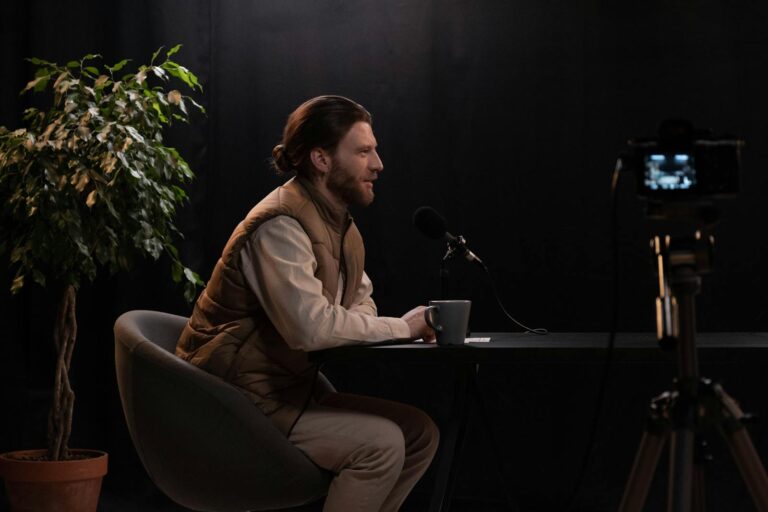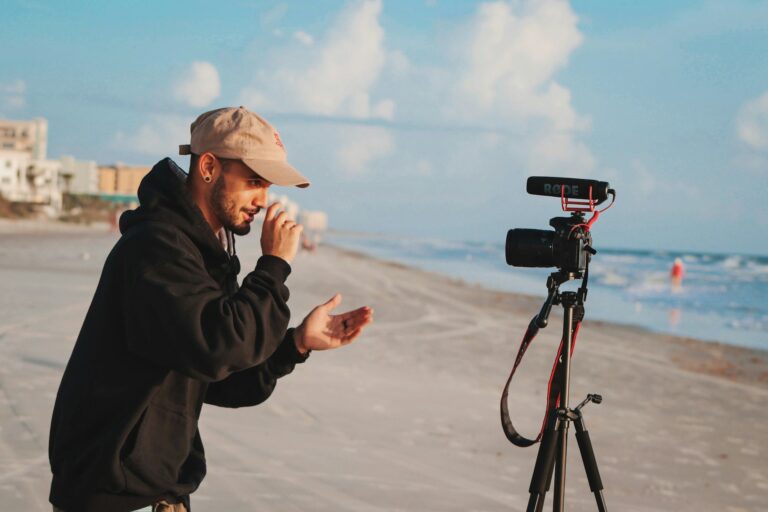Trust is the currency of the creator economy. Whether someone is trying to grow a personal brand on LinkedIn, post daily TikToks, or launch a YouTube channel, the question always circles back to one thing: why should people believe you?
In 2025, the crowded content landscape makes this question more relevant than ever. With AI-generated posts everywhere and algorithms pushing endless noise, creators are asking: does authenticity win trust faster, or does authority still matter most? The real answer is more nuanced — and understanding it could be the key to growing an audience that actually listens, follows, and buys.
Why Authenticity Feels Like a Shortcut to Connection
When people say “just be authentic,” it sounds almost too simple. But authenticity is powerful because humans are wired to connect with people — not polished brands.
A creator who shows up on camera with messy hair, admits they’re still learning, or shares behind-the-scenes struggles often creates instant relatability. That relatability translates to trust. After all, it’s easier to believe someone who doesn’t look like they’re trying too hard.
On platforms like TikTok or Instagram Reels, where raw, unpolished videos perform better than high-production ads, authenticity has an edge. Viewers swipe past sterile perfection but stop when they see a face that feels real.
Still, authenticity has a limit. Being “real” might get someone attention, but without authority, that attention can be fleeting.
Authority: The Slow-Burn Strategy
Authority, on the other hand, is about proving expertise. It’s the credibility that comes from showing receipts — years of experience, case studies, deep knowledge, or thoughtful insights.
Think of LinkedIn thought leaders who consistently post valuable advice about leadership, marketing, or career growth. Their audiences don’t follow them just because they’re relatable — they follow because they demonstrate authority through ideas, frameworks, and data.
Authority doesn’t usually go viral in the same way authenticity does, but it builds something arguably more valuable: long-term respect. And when respect compounds, it often turns into opportunities — partnerships, clients, speaking gigs, or sales.
The Creator Dilemma: Do You Have to Pick One?
Here’s the good news: creators don’t actually have to choose between authenticity and authority. The fastest way to build trust is a blend of both.
Imagine this:
- A creator openly shares the lessons learned from a failed launch (authenticity).
- Then breaks down the three strategies they’re using to fix it, backed by data and research (authority).
That combination makes audiences lean in. They see a real human with relatable struggles, but also someone worth learning from. It’s vulnerability paired with value — a recipe for trust in 2025.
Mini-Hook: Why Audiences Spot Fakes Faster Now
One reason this balance matters so much is that audiences today are sharper. With AI tools churning out polished, “expert-sounding” posts, people are better at sniffing out surface-level authority. They want proof that the voice behind the content is real.
This is why creators who simply regurgitate ChatGPT-style advice without personal perspective struggle to break through. Authority without authenticity feels robotic. Meanwhile, creators who overshare personal details without delivering useful takeaways risk becoming forgettable.
The sweet spot is storytelling with substance: authentic experiences that flow into actionable insights.
Practical Ways to Blend Both
For creators wondering how to strike this balance, it helps to think in formats:
- On video platforms like TikTok, Instagram, or YouTube Shorts, authenticity often comes first. A quick story or off-the-cuff reaction can hook attention, then creators can layer in authority by sharing a framework or tip.
- On LinkedIn, authority often takes the lead — but weaving in authentic personal experiences makes the insights memorable. A case study is great, but a case study told through the lens of “this was harder than it looked” hits deeper.
Even the tools creators use reflect this. Editing software like CapCut or Canva makes it easy to add text overlays and visuals, but the real magic comes from the voice behind the content — one that feels both real and credible.
A Natural Upgrade: Sound Like You Mean It
Here’s where a product naturally fits in: creators who want to project both authenticity and authority should consider audio quality. Nothing kills credibility faster than tinny, muffled sound.
A great budget-friendly option on Amazon is the Blue Yeti USB Microphone. It’s plug-and-play, works with most setups, and instantly makes content sound polished.
When viewers can hear every word clearly, they’re more likely to stick around and believe what’s being said. In 2025, that kind of clarity isn’t just technical — it’s part of building trust.
The 2025 Takeaway
So which builds trust faster: authenticity or authority? The honest answer is that authenticity sparks it, but authority sustains it.
A creator who’s relatable might win a follow today. But a creator who blends that relatability with real expertise keeps that audience for years. In an era of AI-generated everything, the humans who balance being real with being reliable will rise above the noise.
For anyone looking to grow a personal brand, whether on LinkedIn, TikTok, or YouTube, the formula isn’t about choosing one or the other. It’s about showing up as a human who has both stories and skills to share. That’s the kind of trust no algorithm update can erase.






